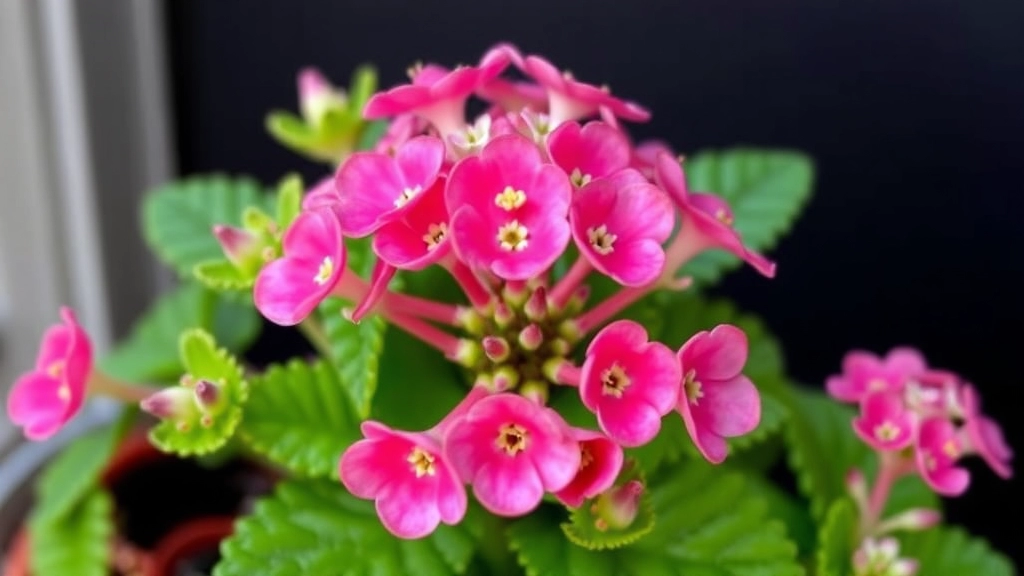Mastering Kalanchoe Mother Of Thousands Care
If you’re looking to master Kalanchoe Mother Of Thousands care, you’ve come to the right place. This unique plant, known for its prolific propagation, thrives with the right light, watering, and soil conditions. Let’s dive into how you can keep your Mother of Thousands healthy and flourishing.
Light Requirements
First, ensure your plant gets plenty of bright, indirect light to mimic its natural habitat.
Watering Tips
Overwatering is a common mistake, so let the soil dry out between waterings.
Soil Conditions
A well-draining soil mix is crucial to prevent root rot and support robust growth. With these basics covered, you’ll be well on your way to becoming a pro at Kalanchoe Mother Of Thousands care.
Ideal Light and Temperature Conditions for Mother of Thousands
When it comes to nurturing your Mother of Thousands (Kalanchoe daigremontiana), understanding its light and temperature preferences is essential. Many plant enthusiasts often wonder, “What are the best conditions for my plant to thrive?”
Proper Watering Techniques to Avoid Overwatering
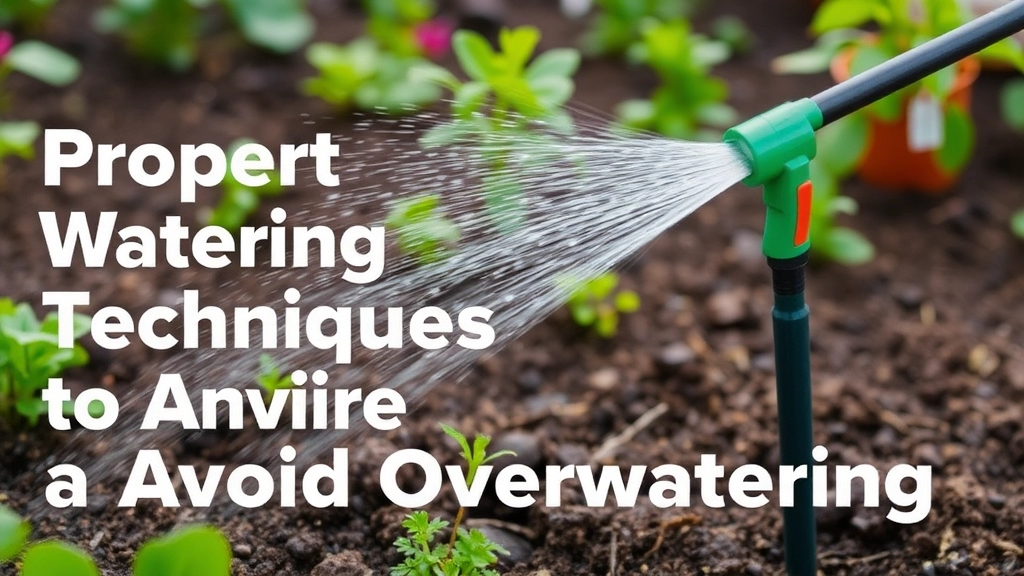
So, you’ve got your Mother of Thousands, and you’re probably wondering, “How much water does it really need?”
Overwatering is one of the most common pitfalls for plant lovers, especially with succulents like Kalanchoe daigremontiana.
Here’s how to keep your plant happy and thriving:
- Check the Soil: Before you water, poke your finger about an inch into the soil. If it feels dry, it’s time for a drink. If it’s still moist, wait a bit longer.
- Watering Frequency: Generally, you want to water every 2-3 weeks during the growing season (spring and summer). In the winter, cut back to once a month.
- Watering Method: When you do water, give it a good soaking until the water drains out of the bottom. This ensures the roots get what they need. Just be sure to empty any excess water from the saucer after.
- Signs of Overwatering: Yellowing leaves, mushy stems, or a funky smell from the soil? Those are red flags. If you spot these, hold off on watering for a while.
- Use Well-Draining Pots: Opt for pots with drainage holes. This is crucial for letting excess water escape and preventing root rot.
Keeping these tips in mind will help ensure your Mother of Thousands stays healthy and vibrant.
The Best Soil Mix for Healthy Growth
When it comes to nurturing your Mother of Thousands, the right soil mix is crucial for its overall health and vitality. Many plant owners often wonder what type of soil will best support the growth of Kalanchoe daigremontiana.
Why Soil Matters
Using the wrong soil can lead to problems like root rot or poor drainage, which can be detrimental to your plant’s health. A well-draining soil mix ensures that the roots receive adequate oxygen while preventing excess moisture retention.
Ideal Soil Composition
For optimal growth, consider the following components for your soil mix:
- Cactus or Succulent Mix: This is specifically designed for plants that thrive in dry conditions.
- Perlite: Incorporating perlite enhances drainage, preventing water from pooling at the roots.
- Coarse Sand: Adds further aeration and helps with drainage.
- Organic Matter: A small amount of compost can provide essential nutrients without retaining too much moisture.
Recommended Ratio
A good starting ratio for your soil mix could be:
- 50% cactus or succulent mix
- 25% perlite
- 25% coarse sand
This combination creates a well-balanced environment that supports healthy root development and minimizes the risk of overwatering.
Potting Tips
When potting your Mother of Thousands, ensure that your container has drainage holes. This simple step can make all the difference in maintaining a healthy plant. For more detailed guidance, check out this complete guide to growing Kalanchoe Mother of Thousands.
Additionally, understanding the propagation methods for Kalanchoe Mother of Thousands can help you expand your collection and ensure your plants thrive.
Essential Fertilization Tips for Kalanchoe daigremontiana
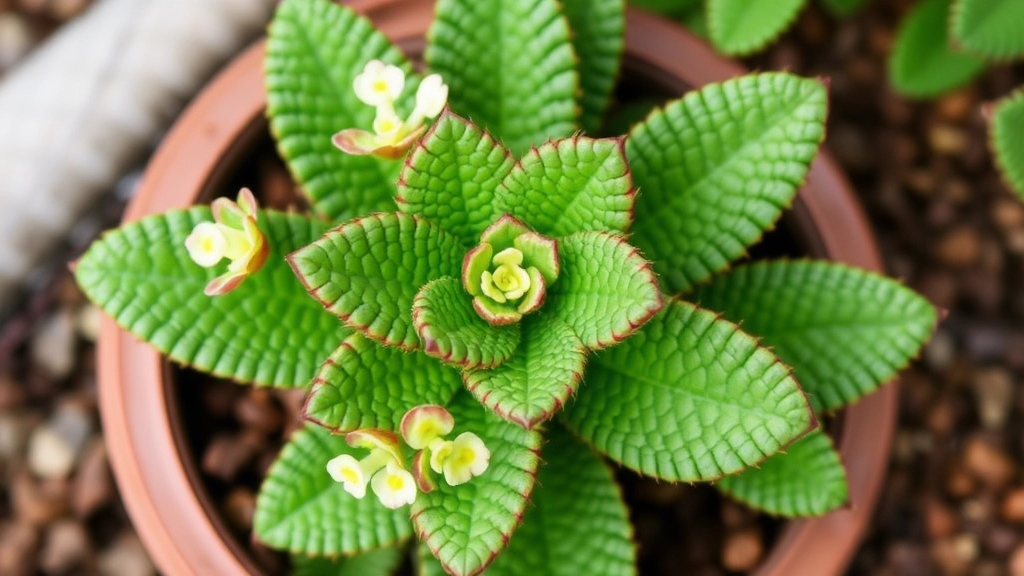
As we delve into the essential fertilization tips for Kalanchoe daigremontiana, it’s important to remember that the right nutrients can significantly enhance the plant’s vibrant growth and resilience.
Understanding Nutrient Needs
Kalanchoe daigremontiana thrives best with a balanced fertilization approach. Here are some key considerations:
- Type of Fertilizer:
- Use a general-purpose, water-soluble fertilizer.
- Opt for one with a balanced N-P-K ratio (e.g., 20-20-20) or a specific succulent blend.
- Frequency of Application:
- Fertilize during the growing season (spring and summer).
- Apply every 4-6 weeks for optimal results.
- Dilution:
- Always dilute the fertilizer to half-strength to avoid burning the roots.
Signs of Nutrient Deficiency
Keep an eye out for these signs that your Kalanchoe may need some extra nutrients:
- Yellowing leaves
- Stunted growth
- Poor flowering
Special Considerations
- Avoid Over-fertilization: Too much fertilizer can lead to leggy growth and root burn.
- Winter Care: Reduce or stop fertilizing during the dormant months (autumn and winter).
As we delve into managing the rapid propagation of Kalanchoe daigremontiana, it’s essential to understand the challenges this plant can present. Many enthusiasts find themselves overwhelmed by its tendency to produce numerous offsets, leading to overcrowding and potential stress on the main plant.
### Key Considerations for Propagation Management
– **Understand Offsets**: Mother of Thousands is notorious for its ability to produce tiny plantlets, or offsets, along the edges of its leaves. These can easily take root and create a dense cluster if not managed properly.
– **Timing is Everything**: The best time to manage propagation is during the growing season, typically spring and summer. This is when the plant is most active and can recover quickly from any intervention.
– **Regular Monitoring**: Make it a habit to check your plant regularly. Look for new offsets and assess their health. If they appear weak or overcrowded, it may be time to intervene.
### Effective Management Techniques
1. **Separation**: If you notice several offsets, consider separating them. Gently twist or cut them away from the main plant. Ensure that each offset has some roots for a higher chance of survival.
2. **Propagation Opportunities**: Instead of discarding the offsets, consider propagating them. Place them in a well-draining soil mix and keep them in a warm, bright location. They can develop into healthy new plants.
3. **Limit Growth**: To prevent excessive propagation, you can pinch off the flower stalks when they appear. This redirects the plant’s energy back into leaf growth instead of producing more offsets.
4. **Container Management**: If your plant is in a pot, be mindful of its size. A larger pot can accommodate more offsets, but too much crowding can lead to root competition.
For more detailed care tips, you might find our [complete guide to caring for Kalanchoe Mother of Millions](https://planthq.org/complete-guide-to-caring-for-kalanchoe-mother-of-millions-plant/) useful. Additionally, understanding the [optimal watering tips for healthy Florist Kalanchoe](https://planthq.org/optimal-watering-tips-for-healthy-florist-kalanchoe/) can significantly improve your plant’s health and propagation success.
How to Safely Repot and Prevent Overcrowding
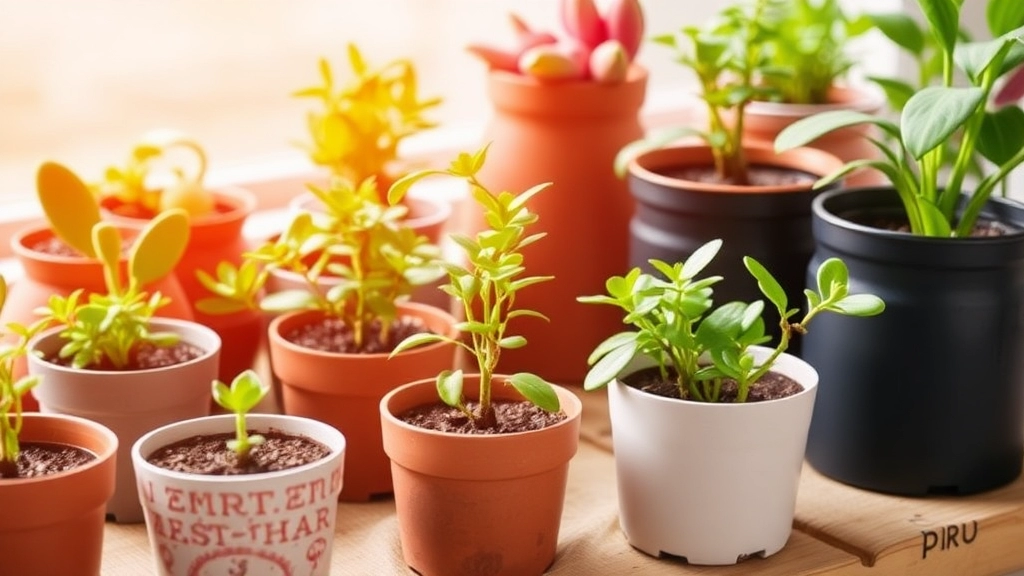
So, you’ve got your Mother of Thousands thriving, but now you’re wondering, “When should I repot? Is it overcrowded?”
These are common concerns, and trust me, repotting can feel daunting. But it’s essential for keeping your Kalanchoe daigremontiana healthy and happy.
When to Repot
- Signs of Overcrowding: If the roots are poking out of the drainage holes or the plant seems stunted, it’s time to repot.
- Best Time: Spring is ideal. The plant is waking up from dormancy and ready to grow.
Steps to Safely Repot
- Gather Your Supplies:
- A slightly larger pot with drainage holes
- Fresh soil mix (more on that later!)
- Water
- Remove the Plant:
- Gently squeeze the pot to loosen the roots.
- Carefully pull the plant out, supporting the base to avoid damage.
- Inspect the Roots:
- Check for any rotting or dead roots. Trim them away with clean scissors.
- Add New Soil:
- Place a layer of fresh soil at the bottom of the new pot.
- Position your plant in the centre and fill in around the sides with more soil.
- Water Lightly:
- Give it a gentle drink to settle the soil but avoid soaking it.
Preventing Overcrowding
- Regular Checks: Keep an eye on your plant every few months. If it starts to look cramped, it might be time for another repot.
- Propagation Control: Mother of Thousands loves to produce offsets. If you notice too many, consider propagating them in their own pots to give your main plant room to breathe.
Repotting might seem like a hassle, but it’s a great way to ensure your plant thrives. Plus, it’s a chance to show off your green thumb!
Pruning and Managing Leggy Growth
Have you noticed your Mother of Thousands stretching awkwardly, reaching for the light?
Leggy growth is a common issue with Kalanchoe daigremontiana, often resulting from insufficient light or improper care.
To maintain a compact and healthy plant, regular pruning is essential.
Here are some effective strategies:
- Identify Leggy Stems: Look for stems that are elongated and sparse. These are prime candidates for pruning.
- Use Clean Tools: Always use sharp, clean scissors or pruning shears to prevent infection.
- Cut Above a Node: When pruning, make cuts just above a leaf node to encourage new growth.
- Remove Dead Leaves: Regularly check for and remove any dead or yellowing leaves. This boosts airflow and overall plant health.
- Consider Timing: The best time to prune is during the growing season, typically in spring or early summer. This allows the plant to recover and flourish.
By managing leggy growth through pruning, you not only enhance the plant’s appearance but also promote robust new growth. For more detailed tips, check out our pruning Kalanchoe plants guide. Additionally, if you’re interested in learning more about the care of another popular variety, the Mother of Thousands care guide offers comprehensive information.
Pest Control for Indoor and Outdoor Plants
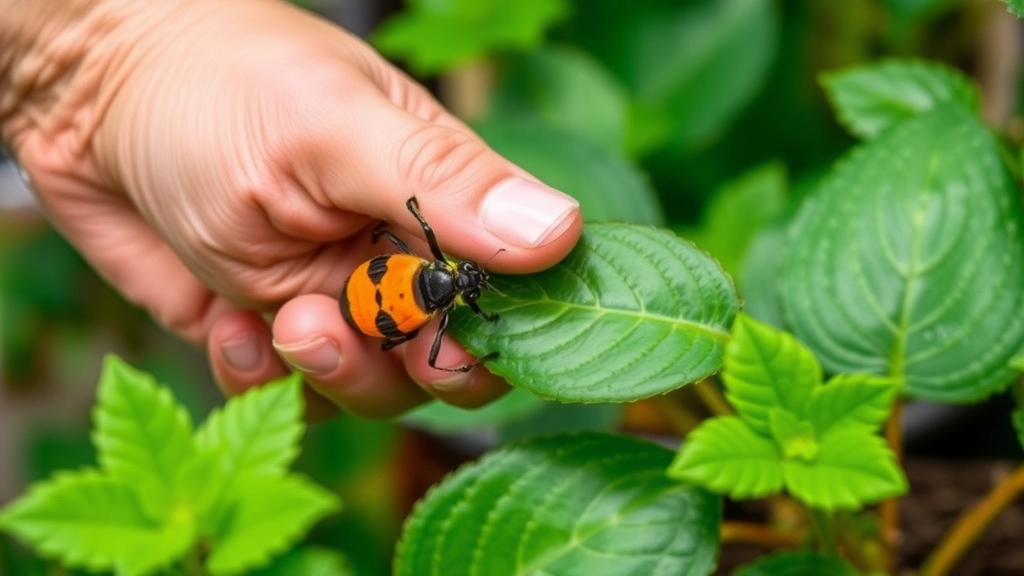
Have you ever noticed tiny critters munching on your beloved Mother of Thousands? It’s a common worry for plant lovers, and trust me, I’ve been there too.
Whether you’re dealing with aphids, mealybugs, or spider mites, keeping your Kalanchoe daigremontiana healthy is all about staying one step ahead of these pests.
Indoor Pest Control Tips
- Regular Inspections:
- Check your plants weekly.
- Look under leaves and at the stem for any signs of pests.
- Natural Remedies:
- A simple solution of water and dish soap can do wonders.
- Spray it on affected areas; it suffocates pests without harming your plant.
- Neem Oil:
- This natural pesticide is a game-changer.
- Mix it with water and spray it on your plants. It’s safe for both indoor and outdoor use.
- Sticky Traps:
- Place these near your plants to catch flying pests.
- They’re a great visual reminder to keep an eye on things.
Outdoor Pest Control Strategies
- Encourage Beneficial Insects:
- Ladybugs and lacewings love to feast on aphids.
- Plant flowers that attract these helpful critters.
- Companion Planting:
- Certain plants can repel pests naturally.
- For example, marigolds are known to deter nematodes and other unwanted guests.
- Regular Cleaning:
- Clear away dead leaves and debris around your plants.
- This reduces hiding spots for pests.
- Insecticidal Soap:
- For a more robust solution, consider insecticidal soap.
- It’s effective against a wide range of pests and safe for the environment.
Prevention is Key
- Healthy Plants:
- A well-cared-for plant is less likely to attract pests.
- Focus on proper watering, light, and nutrients.
- Quarantine New Plants:
- Before introducing new plants to your collection, keep them separate for a couple of weeks.
- This helps catch any pests before they spread.
Toxicity and Safety Considerations for Pets and Humans
As we delve into the care of Kalanchoe daigremontiana, it’s crucial to address a significant concern: its toxicity.
Many plant enthusiasts often wonder, “Is Mother of Thousands safe around pets and children?”
The answer is nuanced.
Toxicity Overview
Kalanchoe daigremontiana contains compounds that can be harmful if ingested.
Key Points to Consider:
- Toxic to Pets: Cats and dogs may experience symptoms such as vomiting, diarrhea, and lethargy if they consume parts of the plant.
- Human Safety: While not as dangerous to humans, ingestion can lead to mild gastrointestinal discomfort.
Symptoms of Ingestion
If you suspect your pet or child has ingested any part of the plant, watch for these symptoms:
- Vomiting
- Diarrhea
- Lethargy
- Loss of appetite
What to Do If Ingestion Occurs:
- Contact a Veterinarian: If your pet shows any symptoms, seek professional advice immediately.
- Emergency Services: For severe reactions, don’t hesitate to visit an emergency vet clinic.
Prevention Tips
To keep your home safe while enjoying the beauty of Mother of Thousands, consider these strategies:
- Placement: Keep the plant out of reach of pets and small children.
- Education: Teach family members about the potential dangers of the plant.
- Alternatives: If you have pets, consider non-toxic plant options to avoid any risks.
For more detailed information on this topic, you may want to explore whether Kalanchoe is poisonous to dogs or the symptoms and treatment options if ingestion occurs. Additionally, understanding the health benefits and usage of Kalanchoe pinnata tea can offer insights into the diverse applications of Kalanchoe plants.
FAQs on Kalanchoe Mother Of Thousands Care
How often should I water my Mother of Thousands?
Generally, you should water your Kalanchoe daigremontiana every 2-3 weeks during the growing season (spring and summer). In the winter, reduce watering to once a month. Always check the soil first; if it feels dry an inch deep, it’s time to water.
What are the signs of overwatering?
Signs of overwatering include yellowing leaves, mushy stems, and a foul odor coming from the soil. If you notice any of these symptoms, hold off on watering for a while to let the plant recover.
What type of fertilizer should I use?
Use a general-purpose, water-soluble fertilizer with a balanced N-P-K ratio (e.g., 20-20-20) or a specific succulent blend. Always dilute the fertilizer to half-strength to avoid burning the roots.
How often should I fertilize my Kalanchoe daigremontiana?
Fertilize during the growing season (spring and summer) every 4-6 weeks. Reduce or stop fertilizing during the dormant months (autumn and winter).
When is the best time to repot my Mother of Thousands?
Spring is the ideal time to repot your Kalanchoe daigremontiana. The plant is waking up from dormancy and is ready to grow. Signs that it’s time to repot include roots poking out of the drainage holes or the plant appearing stunted.
How do I safely repot my Mother of Thousands?
To repot, gather a slightly larger pot with drainage holes, fresh soil mix, and water. Gently remove the plant from its current pot, inspect and trim any dead roots, place it in the new pot with fresh soil, and water lightly to settle the soil.
What are some effective indoor pest control methods?
Regular inspections, natural remedies like water and dish soap, neem oil, and sticky traps are effective for indoor pest control. Check your plants weekly and apply these methods as needed to keep pests at bay.
How can I control pests on outdoor Kalanchoe daigremontiana?
Encourage beneficial insects like ladybugs, practice companion planting with pest-repellent plants like marigolds, regularly clean up dead leaves and debris, and consider using insecticidal soap for a more robust solution.
What are the signs of nutrient deficiency in Kalanchoe daigremontiana?
Signs of nutrient deficiency include yellowing leaves, stunted growth, and poor flowering. If you notice these symptoms, it may be time to fertilize your plant.
How can I prevent overcrowding in my Mother of Thousands?
Regularly check your plant for signs of overcrowding, such as roots poking out of the drainage holes. Consider propagating offsets in their own pots to give the main plant room to breathe and thrive.
What should I do if I introduce new plants to my collection?
Quarantine new plants for a couple of weeks before introducing them to your collection. This helps catch any pests before they spread to your other plants.
References
-
Mother of Thousands Plant Care: How To Grow Kalanchoe Daigremontiana
-
How to Grow Mother of Thousands Indoors
-
Kalanchoe: How to Grow and Care for Kalanchoe Plants
